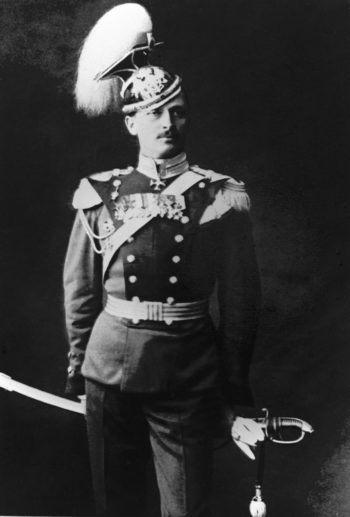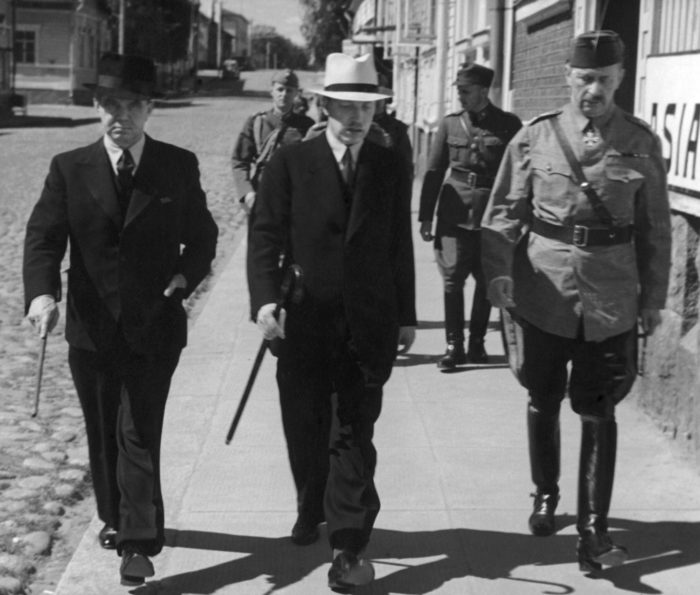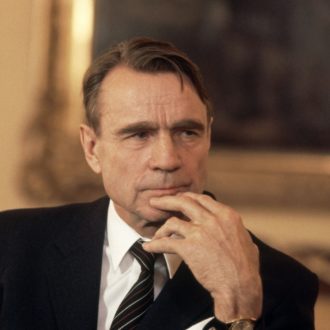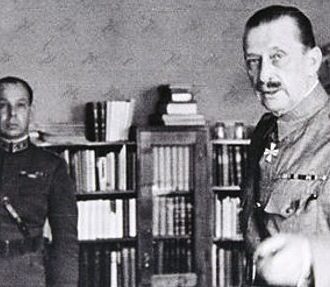Mannerheim (June 4, 1867–January 27, 1951), Finland’s best known war hero, served as president of Finland between August 1944 and March 1946. He guided the country through the transition from war to peace.
He served in the Russian army, where he attained the rank of general, before Finland gained independence in 1917. Later, in Finland, he was made a field marshal, and during the Second World War he was commander-in-chief of the Finnish forces and subsequently became president. No soldier had previously been president of Finland – nor has one been chosen for the post since Mannerheim. He was 78 when he retired, citing health reasons.
From Russian army to Finnish presidency

Mannerheim poses in his Russian army uniform in the early 1900s.Photo: Lehtikuva
Mannerheim was a Finn by birth, but he joined the Russian army in the autumn of 1887, at the age of 20, and served the emperor for 30 years. He was very close to the Imperial Court. After the revolution, Mannerheim fled to Finland in January 1918.
Immediately after gaining independence, Finland experienced a short but merciless civil war between the Reds, or socialists, and the Whites, or the bourgeois forces. Mannerheim led the White army, which defeated the Reds, often by means of harsh measures. Foreign powers also intervened in the Civil War: Germany supported the Whites and Soviet Russia the Reds.
The Civil War divided the nation, and its scars started healing only in the late 1930s, when Mannerheim began to reach out to the Left and succeeded in gaining the trust of the Social Democrats.
During the 1920s and 1930s, Mannerheim had many detractors in Finland, but when the Soviet Union attacked Finland in the autumn of 1939, the Social Democrats approved his appointment as commander-in-chief of the army. He retained the trust of the Left during the Continuation War, also against the Soviet Union, which began in the summer of 1941.
Unanimously persuaded to be president

Over the decades, new buildings have gone up around Helsinki’s statue of Mannerheim, and today kids on skateboards perform tricks on the surrounding plaza.Photo: Emilia Kangasluoma
When Parliament elected Mannerheim president in August 1944, Finland’s independence was in great danger. Finland had been at war with the Soviet Union for three years and had had a military alliance with Germany.
The Soviet army had been attacking all summer. The Finnish army had been forced to retreat and suffered heavy losses. The war had already claimed the lives of 70,000 Finnish soldiers.
Parliament wanted Finland to terminate the alliance with Germany and make a separate peace with the Soviet Union.
Members of Parliament thought that only Mannerheim would possess the authority to lead the country from war to peace. For this reason, leading right-wing, centre and leftist politicians persuaded a reluctant Mannerheim to become head of state. Despite the burden of history, Mannerheim succeeded in the role.
An armistice was agreed with the Soviet Union in the autumn of 1944. Its terms were heavy, but the country was spared from occupation and maintained its independence and its democratic system. Finland broke away from the alliance with Germany and expelled the German troops from northern Finland during the winter of 1945.
After the war, the Soviet Union demanded that Finland’s wartime leadership be punished. At the insistence of the Soviet Union, President Risto Ryti, Prime Minister Edvin Linkomies and Minister of Finance Väinö Tanner, who was also chairman of the Social Democratic party during the war, were convicted, along with others.
By contrast, Mannerheim was not convicted, even though his position during the war was at least as important as those of the political leaders who received sentences. The Soviet Union did not actively demand his conviction, though after the war the Soviet press criticised him strongly.
Mannerheim still commands interest

In July 1941, Mannerheim (right) walks with President Risto Ryti (middle) and Prime Minister Jukka Rangell through the town of Mikkeli, where the military had its headquarters.Photo: SA-kuva/Lehtikuva
Mannerheim’s long career has been under evaluation since his death in 1951. The assessments have been conflicting and often politically coloured. In addition, the Cold War made it difficult to weigh his life’s work. The Soviet Union readily interjected when Mannerheim formed the topic of public discussion in Finland.
Since the end of the Cold War, however, opinions have been nearly unanimous on one point: Mannerheim’s short period as president, leading Finland from war to peace, was his most important achievement.
Even his harshest critics are willing to admit that Mannerheim was the right person for the job at that particular time. It’s unlikely that any other Finn would have had more success than Mannerheim did.
Mannerheim’s life and career have been studied more than those of any other Finnish person. Almost 300 books about him have been published in Finland and abroad, and new studies are constantly appearing.
He continues to be the subject of a wide range of conflicts among historians. Some authors admire him and even worship him as a hero and saviour of the fatherland. Other books criticise his actions during the Civil War or question his skills as a wartime leader in the Winter War (1939–40) and Continuation War (1941–44).
Mannerheim’s life also fascinates ordinary Finns from one generation to the next. His Helsinki residence has been a museum for over 60 years and is still very popular. Mannerheim had the lifestyle of an aristocrat and his home says much about his colourful life and his expeditions.
By Unto Hämäläinen, May 2017
The author is a journalist who specialises in Finland’s political history.





